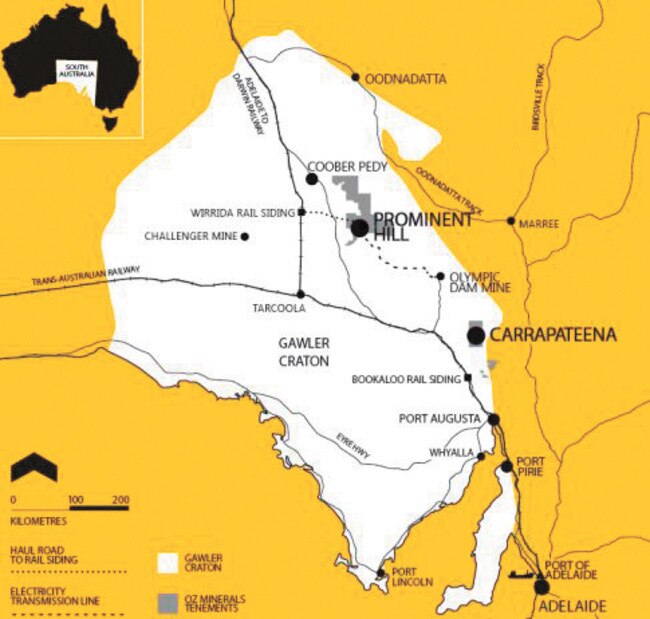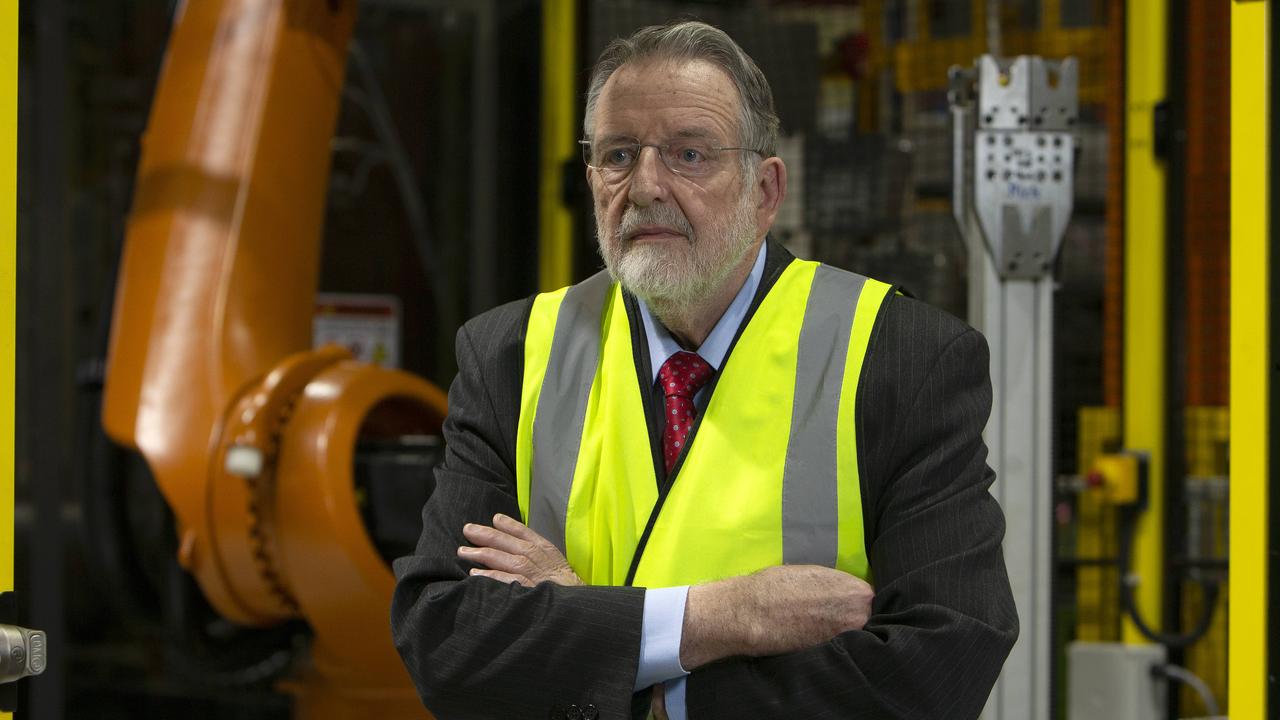Impressive copper exploration results revealed by BHP point to SA’s copper renaissance
Copper was once the foundation of SA’s fortunes and impressive exploration results revealed by BHP in 2018 could pave the way to a second copper renaissance.

SA Business
Don't miss out on the headlines from SA Business. Followed categories will be added to My News.
- BHP dumps Olympic Dam expansion, again
- It could be bigger than Olympic Dam
- BHP: Mining giant marks 30 years at Olympic Dam
EDITOR'S NOTE: This report was originally first published in 2018.
In terms of copper deposits, South Australia is often referred to as “elephant country”.
But until two decades ago, we’d only discovered one elephant — the world’s largest polymetallic ore deposit at Olympic Dam, which a group of renegade explorers at Western Mining Corporation discovered in a high-risk exploration program in 1975.
It was more than two decades later, in 2001, that exploration minnow Minotaur Resources discovered the Prominent Hill deposit — now a mine which produces more than 100,000 tonnes of copper per year.
Then in 2005, one-man band Rudy Gomez found the Carrapateena deposit just west of Lake Torrens, which is currently being developed into a $916 million mine by Adelaide mining company OZ Minerals.

In the space of three decades we’ve gone from one major copper mine to three, factoring in Carrapateena’s start up next year. And the impressive copper exploration results revealed by BHP yesterday — an intersection of 180m at a grade of more than 6 per cent about 1km below the surface — indicate we could be on a path to more.
But why has it taken so long for South Australia to capitalise on its resources riches in this area?
Copper has a storeyed history in South Australia. While the myth is that Australia’s wealth was initially derived “riding on the sheep’s back”, in SA the “Monster Mine” at Burra, discovered in 1845, and other mines at Kapunda, Moonta, Wallaroo and Kanmantoo provided the early wealth for the young colony and also a significant proportion of the world’s copper supplies.
These early copper projects were near or at the surface, meaning mining and discovery was straightforward.
The difficulty in modern times is that, to mix metaphors, the low-hanging fruit has all been plucked, and SA’s geology means that while more massive copper deposits are suspected to exist, they are hidden hundreds of metres under a cap of rock and dirt.

Paul Heithersay, chief executive of the State Government’s Department for Energy and Mining, has for many years used a graph which shows the dramatic difference in size between the Olympic Dam deposit — which is estimated can be mined for up to another 100 years — and other copper deposits, such as Prominent Hill, which have been discovered.
The graph shows that in other areas around the world, copper deposits exist on a continuum. Where one elephant roams, there are likely to be more.
But in SA, the size of Olympic Dam, the discovery of which was based on exploration theories considered radical at the time, sits by itself in terms of sheer magnitude.
The reason is obvious — it is very difficult to discover minerals under 400-1000m of rock. But it has been done.

In 2005, after 17 years of trying to find partners to help him fund the drilling of exploration holes at his Carrapateena prospect in the state’s Far North, Rudy Gomez bet his life savings on two drill holes which would punch more than 600m into the rock.
It was a good bet. Mr Gomez eventually reaped more than $100 million when he sold the project.
It has long been rumoured that BHP had come across some interesting exploration results somewhere in the state’s Far North.
While those rumours were probably just that, the company’s announcement yesterday is sure to fire up other explorers keen to test their exploration theories. Share prices have already started to move based on this theory.

Mr Gomez himself has other projects on the go. And small, listed companies, such as Argonaut Resources, are also preparing to drill.
All of this activity could be a boon for the state.
The previous Labor government instigated the state’s copper strategy, which aims to boost copper production in SA to one million tonnes a year over the next 20 years. We have a way to go.
While we have about 68 per cent of Australia’s copper resources, most of that tied up in Olympic Dam, we produced only about a third of the nation’s copper in 2015.
In that year, copper production was 284,314 tonnes. While BHP has plans, some solid and some still on the drawing board, to expand Olympic Dam, hitting that target will involve the development of a number of new mines.
But the global demand for copper is there, and the potential lies within SA to find and produce more of the metal, which is integral to developing economies as they consume more power, cars and electrical goods.
And GFG Alliance is also planning to build a copper smelter in SA.
The state’s second copper boom could be in the making.



